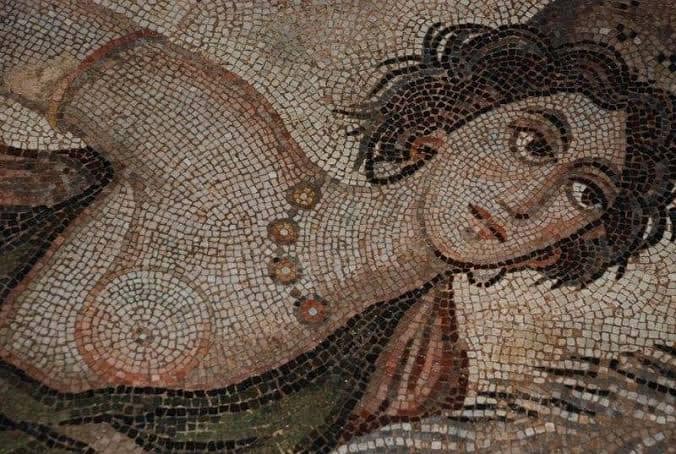Unveiling the Melanippe Amazon Mosaic: Exploring the Myth and Reality of Warrior Women “no breasts”.
The Melanippe Amazon Mosaic is a significant historical artifact displayed at the Urfa Alepplibahçe Mosaic Museum. The term “Amazon” has a long-standing association with warrior women. In Greek, the term “a-masoz” translates to “no breasts,” suggesting a link to these formidable female warriors. It is believed that Amazonian warriors may have engaged in a practice of cutting their right breasts to enhance their archery skills, although the veracity of this claim has been debated for many years.
Greek historians often described the Amazon women, focusing on the technique they employed to restrict the growth of their right breast and improve their right shoulder and arm. According to these accounts, a procedure involving a hot bronze metal was performed on young girls, preventing the development of the right breast while enhancing the strength and agility of the corresponding upper limb.
The Melanippe Amazon Mosaic, housed in the Urfa Alepplibahçe Mosaic Museum, provides visual evidence of the Amazon warrior culture. The mosaic depicts scenes from Amazon mythology and showcases the prowess and valor of these legendary female fighters. The mosaic’s intricate details and artistic representation offer valuable insights into the beliefs and practices surrounding Amazon warriors.
While the historical accuracy of the Amazonian breast-cutting tradition remains uncertain, the concept of powerful and courageous warrior women has captivated imaginations across cultures and generations. The Amazons continue to inspire discussions and interpretations, highlighting the significance of historical narratives and their enduring impact on contemporary understanding. The Melanippe Amazon Mosaic serves as a tangible link to this intriguing aspect of ancient history, sparking curiosity and inviting exploration into the lives of these mythical female warriors.
Hits: 2








